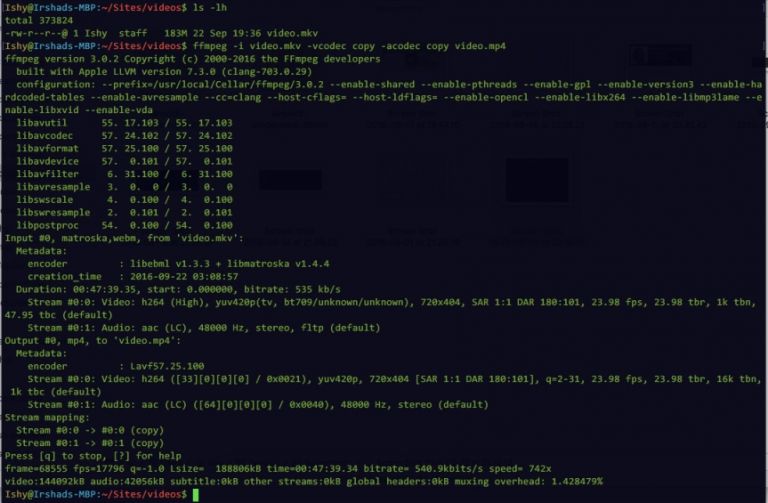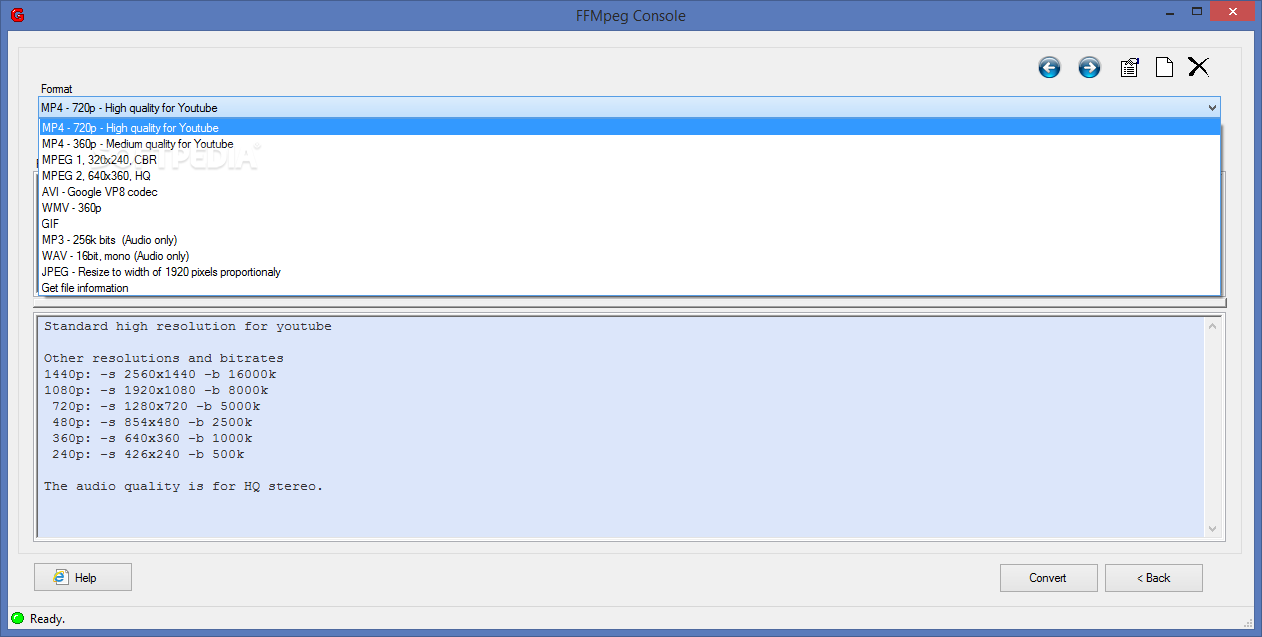
There is also the Windows Movie Maker 2.6 which you can look at for making and editing home made videos. See also the madFLAC as well as the MPC-HC media player. This command will extract the audio from the inputfile.mp4 and save it as outputfile.aac using the aac codec. See also madFLAC as well as how to convert iTunes video to VLC media player as well.įfmpeg -i inputfile.mp4 -vn -acodec copy outputfile.aac Also note that you may need to restart any open command prompt windows or IDEs for the changes to take effect. If the installation was successful, you should see a list of ffmpeg commands. This you can do by simply opening a new command prompt and typing “ffmpeg” and press enter. You can then also verify if you have set the environment variable correctly. So without having to navigate to the binary folder first. You will then be able to run the commands from the command prompt.

Click on “OK” to save the changes and close all open windows.

Make sure to include the “bin” folder, as that is where the FFmpeg executable files are located.
Once you have downloaded the file you will need to complete the following. You will first need to download the executable binary files below.


 0 kommentar(er)
0 kommentar(er)
